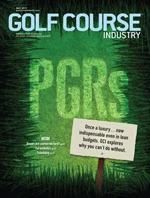“This really grinds my gears.” – Peter Griffin
I love to play golf. In a perfect world, I’d play every day that ends in “y.” I also enjoy it when others find similar pleasure in our great game.
But I’m not the first to mention it but the game is hurting. The problems are everywhere. They concern me most at the club/course level, where real people are trying to enjoy the game but are disappointed by what they find.
Many of the shortcomings are understandable. Doing what they can to stay open, clubs are cutting services, agronomic maintenance, operating budgets, and membership dues. And not much is helping: Not “sustainable golf,” “brown is the new green,” The First Tee, or We Are Golf.
What we are is in trouble.
I can accept less than the highest quality conditions – we’re not playing the U.S. Open – if it means a course can remain open. I’ll support the process so long as I can tee it up and have fun. But good times or bad, there are a few things that every club, course, or resort must do if they want me to return. Ways that the staff – grounds crew, pro-shop personnel, meeters, greeters and everyone else who depends on my greens fee for a living – can elevate my experience even in a tough economy.
“The devil is in the details,” so here are my 10 undeniable details to make my round pleasurable come hell or high- interest rates.
- If a course can no longer pay for an attendant at the bag drop, make sure there is sufficient signage directing me to the golf shop. I don’t want to miss my tee time.
- At the practice area, if you can’t mow the tees, remove the divots, and fill the scars with appropriate material every day, make me hit off a mat. Modern artificial surfaces are excellent, soft and always give a level lie. Buckets for cleaning clubs are a nice touch, but change the water daily and provide clean towels. The range shouldn’t smell like landfill.
- No matter the size of your putting green, change hole locations at least three times a week. Whether I’ve paid $10 or $100, I shouldn’t have to put up with holes with broken edges, uneven lies, liners near the surface, crooked flagsticks and “volcanoes.” When possible, spread the holes around to limit turf wear and give us room to breath as we practice.
- On teeing grounds, move the markers so I hit off decent turf – not soil – and a clean lie. Align tee markers toward the intended landing zone, especially on the first and tenth tees; since most golfers fade or slice, aiming markers to the right means those holes will be backed up all day. Beginners and higher-handicaps deserve good forward tees, too. If the crew is picking up lots of broken and abandoned tees, charge for them in the pro shop; golfers will remember to pick them up and use them again.
- Filling divot scars in fairways is an expensive use of a crew. But if you expect members and guests to repair their damage, put signs on bottles of divot mix and each tee explaining how much mix goes in each divot and how to make it level. It might not make sense to include seed: The sand can smother new seedlings and inhibit lateral growth of existing turfgrass and dull mower blades.
- If you can’t rake the bunkers regularly, make rakes available so I can smooth my footprints and those of negligent players (With luck, those idiots who don’t clean up after themselves will trip over a rake and wonder why it’s there).
- If you must cut putting greens with a triplex unit, instruct your operators to get off the machine and remove the flag before mowing and then replace it when done. Removing a flagstick while riding can damage the hole, the flagstick, or the operator, as well as leave skips of uncut turf that affect the path of the ball. I don’t want a badly-mown edge or “Bullwinkle” costing me a couple of skins.
- Locate holes in sections of the greens accessible to all levels of player. When replacing old hole plugs (difficult on hybrid Bermudagrass), make them as level as possible. As the great Dr. Joe Troll said about plugs, “When they’re low, they show and when they’re high, they die.”
- If you can’t mow the greens daily, consider rolling the whole surface or just a section. A course’s putting greens can’t be smooth enough, so take advantage of whatever opportunities exist to repair and level ball marks. Furthermore, use growth regulators frequently, watch your irrigation cycles, and remember that healthy turfgrass allows pitch marks to recover quickly.
- Please make sure that at some point during my day at your club, somebody on staff looks me in the eye, smiles, and says, “Hi, how are you? Having fun? Play well.” And means it. GCI
|






